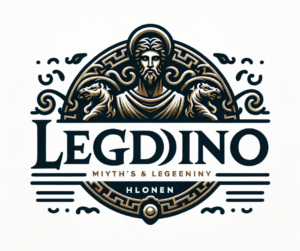
Introduction
In the world of modern folklore, few entities have garnered as much attention and intrigue as the Slender Man. This enigmatic figure, whose origins are rooted in internet culture, has become a prominent symbol in the realm of horror. This article delves into the origins, impact, and cultural significance of the Slender Man, providing a comprehensive exploration of how this mythos has evolved and influenced contemporary media.
Origins of the Slender Man
The Slender Man mythos began in 2009, born from the creative minds of users on the Something Awful forums. The character was first introduced by Eric Knudsen, who used the pseudonym “Victor Surge,” as part of a Photoshop contest aimed at creating paranormal imagery. Knudsen’s submission featured a tall, faceless figure in a suit, accompanied by eerie captions suggesting a connection to missing children and unexplained phenomena.
The Slender Man quickly captivated the online community, leading to an explosion of fan-created content. Stories, images, and videos began circulating, each adding layers to the mythos. The Slender Man was characterized by his unnaturally long limbs, featureless face, and an ability to induce paranoia and hallucinations in his victims.
The Slender Man Phenomenon
As the Slender Man mythos grew, it transcended its online origins, impacting various forms of media and popular culture. This phenomenon is a prime example of how internet folklore can evolve into mainstream media. The Slender Man has appeared in numerous video games, films, and literary works, each interpretation adding to his complex narrative.
- Video Games: The Slender Man’s first major foray into gaming came with the release of “Slender: The Eight Pages” in 2012. This survival horror game, developed by Parsec Productions, tasked players with collecting pages while evading the Slender Man. The game’s success led to sequels and inspired similar games that capitalized on the Slender Man’s eerie presence.
- Films: The Slender Man has also made his mark on cinema. The 2018 film “Slender Man,” directed by Sylvain White, attempted to bring the character to the big screen. Despite mixed reviews and controversy surrounding its release, the film represents a significant moment in the character’s transition from internet legend to mainstream media.
- Literature: The Slender Man’s influence extends to literature, with various authors exploring his mythos in novels and short stories. These literary works often delve into the psychological aspects of the Slender Man, exploring themes of fear, madness, and the unknown.
Impact and Cultural Significance
The Slender Man phenomenon is not just a curiosity of internet culture; it has significant implications for our understanding of folklore and digital media. The Slender Man’s impact can be examined through several lenses:
- Psychological Influence: The Slender Man’s ability to induce fear and paranoia is a testament to the power of digital folklore. The character’s influence extends beyond mere entertainment, affecting individuals’ perceptions of reality and their mental health. This phenomenon is particularly evident in the tragic case of the 2014 stabbing incident in Wisconsin, where two young girls attempted to murder a classmate as part of a misguided attempt to appease the Slender Man. This incident highlighted the potential dangers of blending fiction with reality and raised questions about the responsibilities of creators and consumers in digital spaces.
- Cultural Reflection: The Slender Man mythos reflects contemporary anxieties and fascinations. His faceless, otherworldly appearance taps into deep-seated fears of the unknown and the unknowable. The character’s ability to manipulate and terrorize aligns with modern themes of surveillance and control, making the Slender Man a symbol of contemporary anxieties.
- Digital Folklore: The Slender Man is a prime example of digital folklore, a new form of mythmaking that arises from online communities. Unlike traditional folklore, which is passed down through generations, digital folklore spreads rapidly through social media, forums, and fan-created content. This rapid dissemination allows for constant evolution and reinterpretation of the mythos, making it a dynamic and ever-changing cultural phenomenon.
Conclusion
The Slender Man mythos is a fascinating case study in modern folklore, illustrating how internet culture can give rise to powerful and enduring symbols. From its humble beginnings on a forum to its impact on media and real-life events, the Slender Man has captivated imaginations and provoked deep reflection on the nature of fear and storytelling in the digital age. As we continue to navigate the intersection of technology and culture, the Slender Man serves as a reminder of the complex ways in which digital folklore can shape and reflect our collective anxieties and curiosities.


















